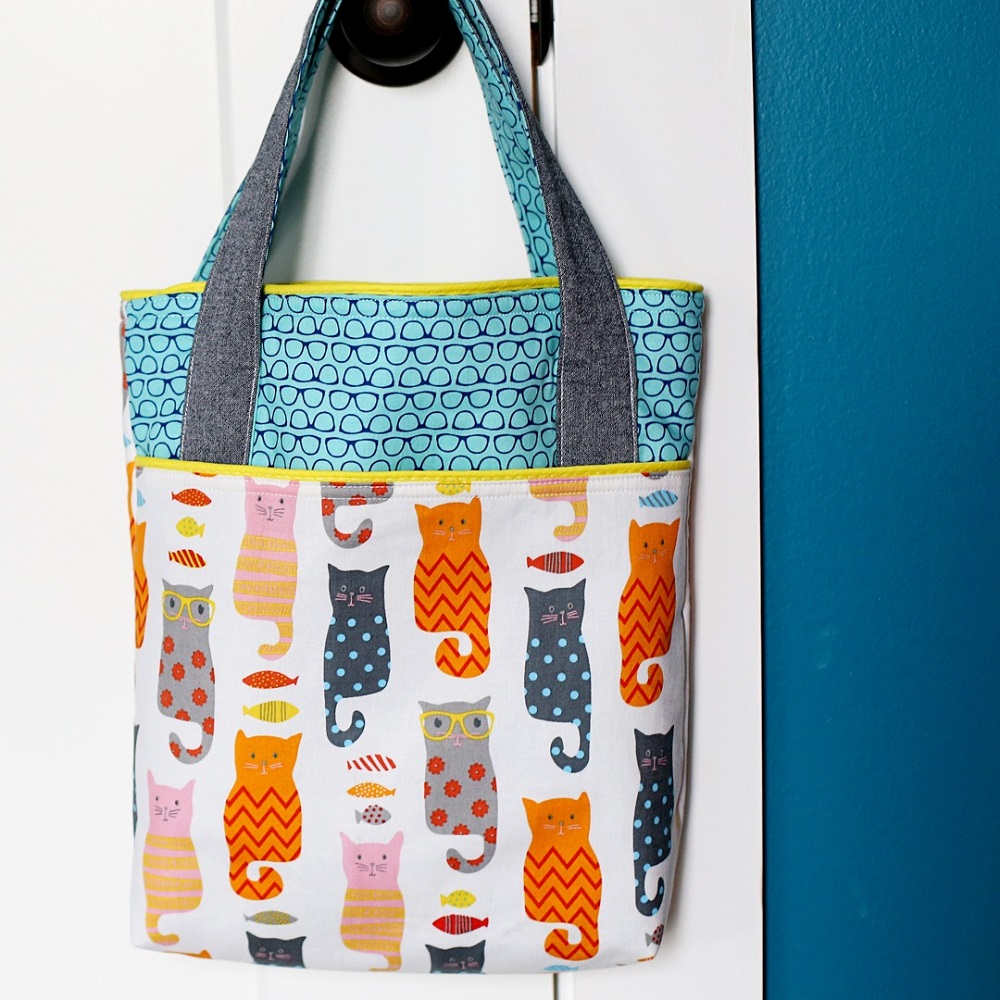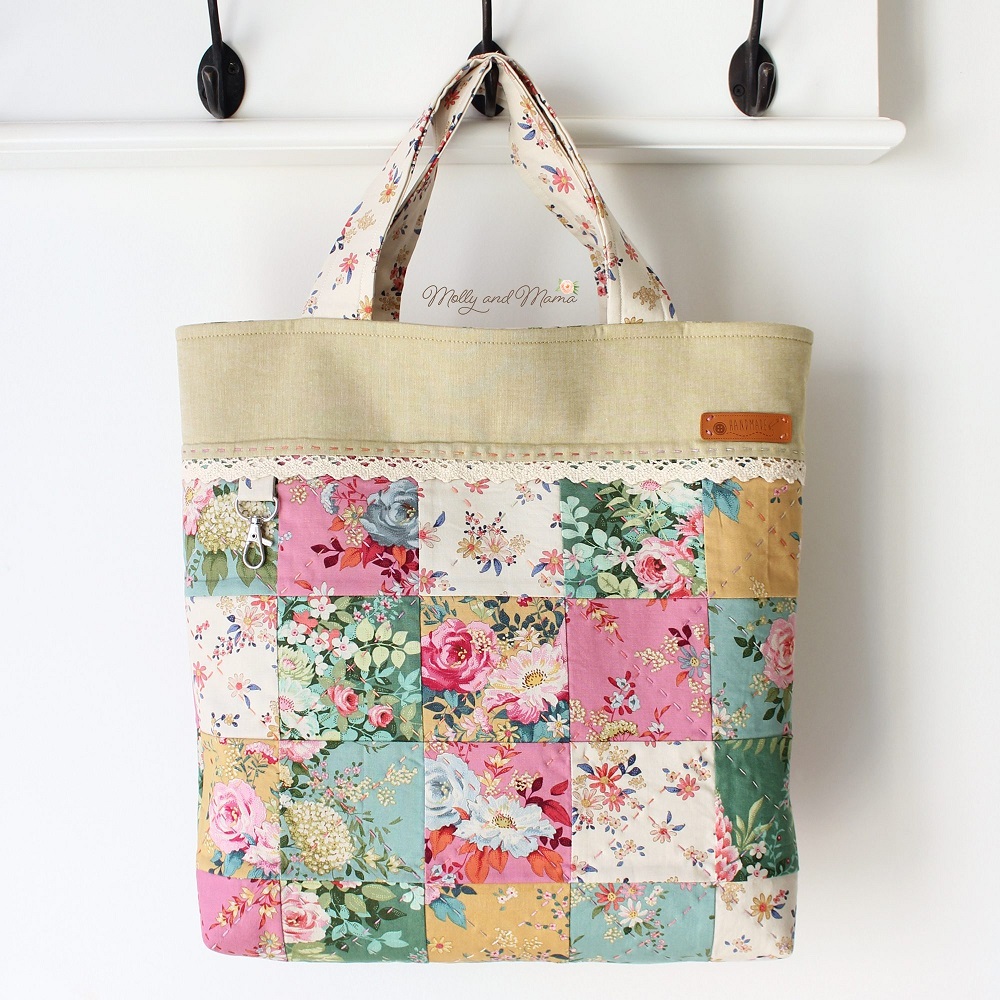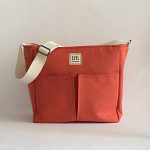Choosing the Right Fabric for Your Tote Bag
The right fabric is key to a durable and stylish tote bag. Here are factors to consider when selecting the material:
- Weight and Durability: Look for heavy-weight fabrics like canvas, denim, or upholstery fabric that can withstand daily use.
- Texture and Feel: Choose a fabric that feels good to the touch since you’ll be carrying the bag often. Soft cotton or blends work well for comfort.
- Easy to Clean: Opt for materials that are easy to maintain. Fabrics that are machine-washable will make your life easier.
- Pattern and Color: Pick a color or pattern for your tote bag pattern that fits your style. Remember, darker colors hide stains better than lighter shades.
- Eco-Friendly Options: Consider sustainable fabrics like recycled polyester or organic cotton to reduce environmental impact.
Always test a small piece with your sewing machine to ensure it handles well. Your chosen fabric will set the stage for your tote bag’s performance and aesthetic appeal.

Essential Tools and Materials for Tote Bag Making
When setting out to make your own tote bag, gathering the right tools and materials is crucial. Below are the essentials you will need:
- Fabric: As previously discussed, select a durable weight fabric like canvas, denim, or upholstery material for your tote bag pattern.
- Sewing Machine: A quality machine will ensure efficient and neat stitching. Make sure it can handle the fabric weight.
- Scissors: Invest in a sharp pair specifically for fabric cutting to achieve clean edges.
- Measuring Tape: Precision is key in pattern making, so a reliable measuring tape is necessary.
- Tailor’s Chalk or Fabric Marker: Use these to mark your fabric without leaving permanent stains.
- Straight Pins: Pins hold fabric pieces together before sewing, aiding in precision.
- Thread: Choose a color that matches or complements your fabric. Ensure the thread is strong enough for heavy-weight materials.
- Needles: Have a variety of sizes on hand, suited for your fabric’s thickness.
- Seam Ripper: Mistakes happen; a seam ripper can help correct them without damaging the fabric.
- Iron: Pressing seams will give your tote bag a professional finish.
While these are the essentials, depending on your design, additional materials like interfacing, zippers, buttons, or embellishments might be required. Make sure to plan ahead and have everything ready before you start cutting your tote bag pattern.
Step-by-Step Guide to Cutting Your Tote Bag Pattern
Creating your tote bag starts with correctly cutting the pattern. Let’s go step by step.
- Prepare Your Workspace: Clear a large, flat surface. Make sure it’s clean and well-lit. Lay out your fabric.
- Iron Your Fabric: Remove any wrinkles or folds. This helps achieve precise cuts.
- Position the Pattern: Place your tote bag pattern on the fabric. Use weights to keep it in place. This prevents shifting during cutting.
- Mark the Fabric: Trace the tote bag pattern using tailor’s chalk or a fabric marker. Be sure to include all notches and marks.
- Cut the Fabric: With sharp scissors, cut along the lines you’ve traced. Follow the marks for accuracy.
- Label Pieces: If your tote bag pattern has multiple pieces, label each part to avoid confusion later on.
- Clip Notches: Notches help align pieces when sewing. Cut small triangles where indicated.
- Check Your Work: Double-check each piece against the pattern for accuracy.
If needed, adjust now before sewing. Remember, patience in cutting leads to a polished finished tote bag.

Sewing Techniques for Assembling Your Tote Bag
Once you have your tote bag pattern pieces cut out, assembling them correctly is crucial for a sturdy and functional bag. Here’s a simplified guide to help you get started:
- Align the Fabric Pieces: Lay the corresponding pieces right sides together. Align edges precisely.
- Pin the Edges: Secure the fabric layers with straight pins. This prevents shifting while you sew.
- Sew the Seams: Using your sewing machine, stitch alongside the pinned edges. Leave an appropriate seam allowance, usually about 1/2 inch.
- Reinforce the Corners: To ensure durability, sew over the corner seams twice.
- Press the Seams: Use an iron to press the seams flat. This gives a cleaner, more professional look.
- Attach the Handles: Pin the handles in place between the fabric layers. Ensure they’re evenly positioned before sewing.
- Topstitch if Necessary: For aesthetic appeal and extra strength, add a line of topstitching around the bag’s top edge.
- Final Assembly: Sew the bag’s sides and bottom together. Turn right side out and press again.
By following these steps for your tote bag pattern, you’ll not only create a beautiful accessory but also one that’s robust enough for everyday use. Remember to be patient and precise for the best results.
Customizing Your Tote Bag Design
Customizing your tote bag pattern is your chance to shine. Think about what makes a bag uniquely yours. Is it a splash of color, a special pattern, or an unusual shape? Here are some ideas to help you make your tote bag stand out:
- Choose a Unique Shape: Don’t stick to the basics. Try a rounded bottom or an asymmetrical top.
- Select Bold Patterns or Colors: Stand out with bright, eye-catching designs or vibrant colors.
- Add Texture with Appliqués or Embroidery: Personalize your bag with decorative elements like appliqués or embroidery.
- Use Contrasting Fabrics: Combine two different fabrics for a stylish, contrasting look.
- Include Unique Handles: Experiment with different materials for handles, like leather straps or braided rope.
- Incorporate Prints or Logos: If you’re making a gift, consider adding a custom print or embroidered logo.
Remember, your tote bag should reflect your personal taste. Take your time choosing the details that will make your bag perfect for you. Keep it simple and focus on what you love for the best results.
Adding Pockets and Compartments for Functionality
A functional tote bag needs pockets and compartments. They help organize items and make them easy to find. Follow these steps to add them to your tote bag pattern:
- Decide on Pocket Size and Placement: Think about what you’ll carry. Place pockets where they’ll be most useful.
- Cut the Pocket Pieces: Use your tote bag pattern to cut fabric pieces for your pockets.
- Sew the Pocket: Fold the top edge of the pocket, press with an iron, and sew. Then attach the pocket to your tote by sewing the remaining three sides to the bag’s main piece, right sides together.
- Add a Zipper for Security: If you want to make a pocket with a zipper, sew the zipper onto the pocket pieces first, then sew the pocket to the bag.
- Create Compartments: Use additional fabric panels to divide the interior of your tote into sections. Sew the bottom and sides to the inside of the bag.
- Test the Pockets: Put items in the pockets to make sure they fit well and are secure.
Remember, the aim is to make your tote bag both stylish and practical. Pockets and compartments can greatly enhance the functionality of your bag, keeping you organized on the go.
Tips for Ensuring Durability and Strength in Your Tote Bag
To make a tote bag last, focus on durability and strength. Apply these tips:
- Use Reinforced Stitches: Double-stitch the seams for extra hold, especially at stress points.
- Choose Quality Thread: Select heavy-duty thread that won’t break easily. This adds to the bag’s lifespan.
- Add Extra Fabric at Seams: Fold fabric edges over and sew them down. This prevents fraying.
- Secure the Handles: Attach handles with strong stitches. Consider using rivets or bar tacks for reinforcement.
- Use Interfacing: Apply interfacing to give your tote bag structure and support, especially on the bottom panel.
- Box the Corners: For a stronger base, create box corners. They spread out weight more evenly.
- Incorporate Durable Hardware: Pick metal zippers and snaps. They last longer than plastic ones.
Each of these tips will help your tote bag pattern withstand regular use. A little extra effort in making ensures a tote that’s both stylish and sturdy.

Finishing Touches: Lining, Handles, and Closure Options
Once the main structure of your tote bag is assembled, adding the finishing touches can truly elevate its functionality and style. To ensure your tote bag pattern results in a bag you’ll love to use every day, here are the key elements to focus on:
- Lining Your Tote Bag: A lining adds to the bag’s durability and offers a clean finish inside. Choose a lining fabric that complements your tote’s design. Cut the lining using your tote bag pattern, sew it into the inside, and secure it to the seams.
- Selecting Handles: Handles must be both strong and comfortable. Canvas straps, leather, or nylon are all good choices. Make sure they are the right length for carrying over the shoulder or by hand, and attach them securely to the bag.
- Closure Options: Decide if you want your bag to close with a snap, zipper, or magnetic button. Adding a closure helps keep your belongings secure and adds a polished look to your tote bag pattern. Sew the closure onto the appropriate parts before attaching the lining, if possible.
With attention to these final details, you’ll have a tote bag that not only looks great but is perfectly tailored to your needs.

